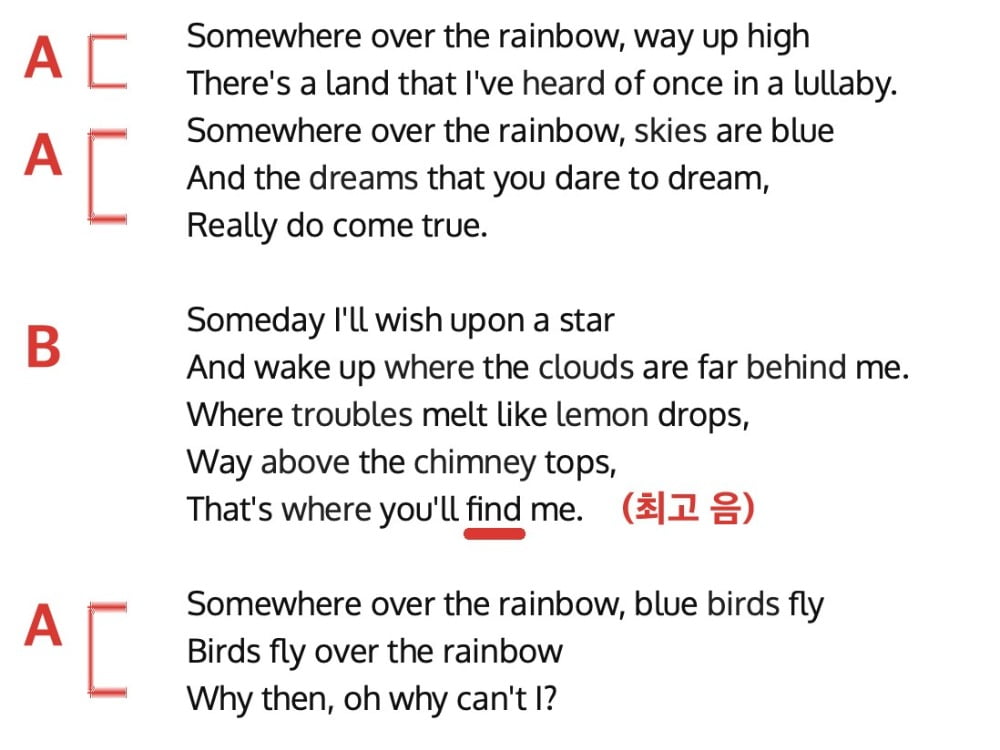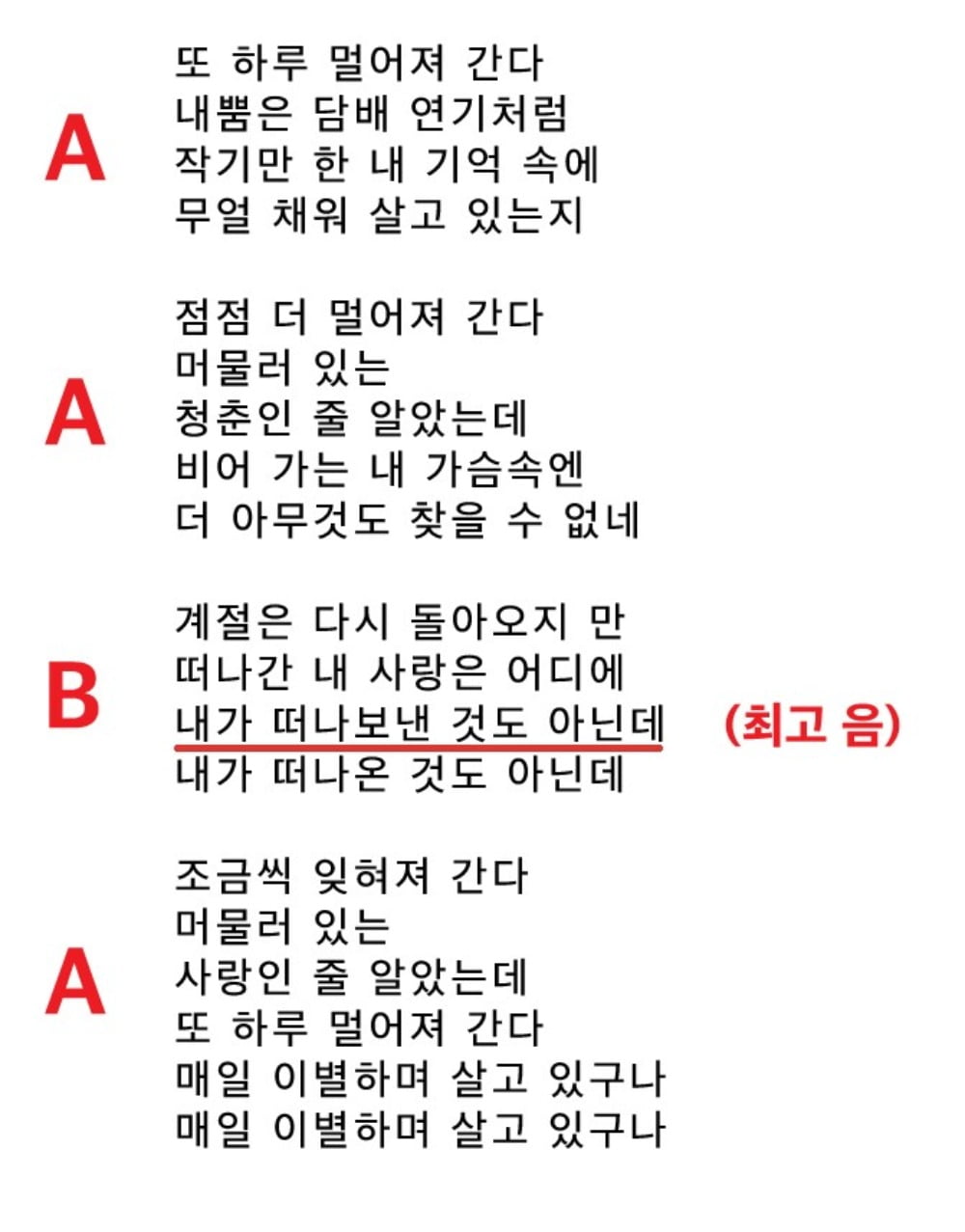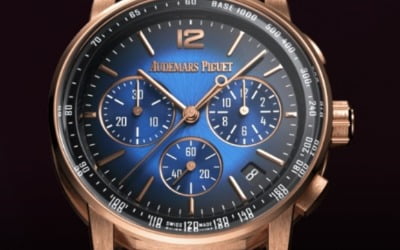인생의 32 마디-'서른 즈음에'로 뜯어본 재즈의 형식과 파괴
-
기사 스크랩
-
공유
-
댓글
-
클린뷰
-
프린트
[arte] 론 브랜튼의 Jazz it UP
인생의 32 마디 - 재즈와 브로드웨이의 쇼튠(뮤지컬 음악) 형식
32 Bars of Life - The Showtune form in Jazz & Broadway
인생의 32 마디 - 재즈와 브로드웨이의 쇼튠(뮤지컬 음악) 형식
32 Bars of Life - The Showtune form in Jazz & Broadway

많은 음악가들이 이 코드 진행 위에 다른 멜로디나 '헤드'를 연주한 예는 무수히 많습니다. 몇 가지 주목할 만한 예는 다음과 같습니다:
[소니 롤린스와 함께한 'Oleo']
[델로니어스 몽크 'Rhythm-A-Ning (브뤼셀, 1963)']
이 형식은 네 개의 구절(AABA)로 구성되어 있으며, 대부분 각 A 구절은 8마디로 이루어져 있습니다. 두 번째 A 구절은 보통 약간의 화음 변화나 가사 변화를 가지지만 명확히 첫 번째 A 구절의 반복입니다. 중간 부분인 B 구절은 보통 다른 키나 화음 색깔로 짧은 화음 변화를 가져와 이 구절을 A 구절과 구분 짓습니다. B 구절은 항상 첫 두 A 구절에서 제기된 문제를 해결하는 음악적 절정을 포함합니다. 마지막 A 구절은 노래의 아이디어를 확정하는 일종의 귀환 또는 확인입니다.
AABA 노래 형식이 그렇게 두드러지게 된 주요 이유 중 하나는 각 노래가 아이디어나 이야기를 표현하는 뮤지컬 쇼에서 이야기의 요소들을 포착하기 때문입니다. 음악에서 이야기를 들려줄 때, 우리는 그것을 음악적 여정으로 생각할 수 있습니다. 여기서 문제를 제기하고(A 구절들), 중간 부분에서 해결책을 찾으며(B 구절), 마지막 A 구절에서 문제가 해결된 것을 보여줍니다. 예를 들어:
A: 내 강아지를 잃어버렸어, 어디 갔지?
A: 내 강아지를 잃어버렸어, 어디 있을까?
B: 내 강아지를 찾았어!
A: 내 강아지를 잃어버렸지만, 돌아왔어.
B 구절을 '브리지'라고 부르기도 하지만, 제가 보기에는 첫 부분(A 구절)에서 제기된 문제에 대한 답입니다. '답'은 항상 음악적 절정을 포함하며, 즉 가장 높고 가장 큰 순간에서 노래의 표현이 가장 강렬해지는 것입니다.
가장 유명한 재즈 스탠다드 중 하나인 'Somewhere Over the Rainbow'가 이 형식이 어떻게 작동하는지 잘 보여주는 예입니다. 이 곡의 작사가 E. Y. 하버그는 영감을 '문제가 있는 어린 소녀를 위한 발라드'에서 얻었다고 주장했습니다. 이 소녀는 캔자스에서 벗어나고 싶어 했으며, 캔자스는 건조하고 무미건조한 곳이었습니다. 그녀는 무지개 외에는 인생에서 색채를 본 적이 없었습니다. 작곡가 해롤드 알렌은 이 아이디어가 '긴 넓은 선을 가진 멜로디'가 필요하다고 판단했습니다. 가사를 살펴보면 이 형식이 어떻게 작동하는지 알 수 있습니다.

[완전종지]
[불완전종지]
또 다른 유명하지만 더 최근의 AABA 형식의 예는 김광석의 '서른 즈음에'입니다. 이 곡은 32마디 형식의 훌륭한 예시이지만, 테마의 슬픔을 더 잘 표현하기 위해 마지막에 한 줄이 반복되어 조금 더 깁니다. A 구절은 첫 줄에서 "또 하루 멀어져 간다"라는 존재론적 문제를 표현하고 있습니다. 시간은 지나가고 나는 혼자 남겨진다는 것입니다. B 구절은 이 노래에 간신히 담겨 있는 절대적인 가슴 아픔을 담고 있습니다: "내가 떠나보낸 것도 아닌데, 내가 떠나온 것도 아닌데" 이는 내가 당신을 떠나보낸 것도, 내가 떠난 것도 아니라는 것입니다. 이 구절은 노래에서 가장 높은 음정을 가지고 있으며, 표현의 강도가 가장 강렬한 음악적 고조를 포함합니다. 구절은 다음과 같습니다:

알렌과 김광석의 글쓰기를 비교해 보면, 두 작가 사이의 세월에도 불구하고 이 형식은 아이디어 표현을 멋지게 담아내며 그 제한 내에서 매우 유연하다는 것을 알 수 있습니다. AABA 형식은 형식과 기능 간의 모순을 잘 담아내어 많은 노래와 아이디어에 사용되었습니다. 때로는 형식이 더 길어질 수도 있으며, 예를 들어 몇몇 작곡가들은 구절 당 8마디 이상을 사용하거나 B 구절로의 전환을 추가하기도 합니다. 비틀즈의 폴 매카트니는 그의 잘 알려진 노래 'Yesterday'에서 이 형식을 바꾸었으며, A 구절은 7마디이고 B 구절은 8마디이며, B 구절은 빠르게 키가 바뀌어 구절의 마지막 음에서 절정을 이룹니다.
[비틀즈 'yesterday(Remastered 2009)']
이처럼 32마디 형식은 많은 사람들에게 사용되었으며, 우리를 많은 다양한 장소로 데려갔습니다. 시간이 지나면서도 32마디 형식에서 더 많은 것이 나올 것이라고 확신합니다. / 론 브랜튼 재즈 피아니스트·작곡가
<칼럼 원문> 32 Bars of Life - The Showtune form in Jazz & Broadway
When most people listen to Jazz standards, they are hearing a particular form in music that goes back many years to early American Broadway shows and the composers who worked in what is called "Tin-pan Alley" – an area on West 28th Street, between Fifth and Sixth Avenues in the Flower District of Manhattan. This area originally started around 1885 when certain music publishers started up their business in several buildings in the area. Back then, music publishing was a business because so many homes had a piano in them and was the domestic center of entertainment. This form – the AABA form – became the predominant musical form used around 1925. This form can be found in composers in the American Songbook such as George Gershwin, Harold Arlen, Jerome Kern, and Cole Porter. The most famous example of this form, in Jazz, can be found in what is commonly called "rhythm changes" or the chord changes based upon George Gershwin's "I Got Rhythm". (https://en.wikipedia.org/wiki/Rhythm_changes) There are so many examples of musicians playing different melodies or "heads" over these chord changes. Some notable examples of this are found here:
"Oleo" with Sonny Rollins (https://www.youtube.com/watch?v=aflCJy8NY1c&pp=ygUSb2xlbyBzb25ueSByb2xsaW5z)
Thelonious Monk - Rhythm-A-Ning (Brussels, 1963)
(https://www.youtube.com/watch?v=D3nkms4toYk&pp=ygUdcmh5dGhtLWEtbmluZyB0aGVsb25pb3VzIG1vbms%3D)
The form consists of four phrases (AABA) and most commonly, each A phrase is 8 bars in length. The second A phrase usually has a slight change in harmony or lyric but is clearly a repeat of the first A phrase. The middle part or B phrase is usually where there is a short harmonic change to another key or some different harmonic colors which help set this phrase apart from the A phrase. The B phrase always contains a musical climax or the denouement where the problem expressed in the first two A phrases is resolved. The last A phrase is a return home or confirmation of sorts, usually of the song's idea that is being expressed.
One of the main reasons why the AABA song form because so prominent is because of how it encapsulates the elements of story telling which is a major part of musical shows where each song expresses an idea or story. When telling a story in music, we can think of it as a musical journey where we start with a problem (A phrases), find a solution in the middle part and portray the problem as being solved in the last A phrase. An example of this could be as such:
A: I lost my dog, where did he go?
A: I lost my dog, where could he be?
B: I found my dog!
A: I lost my dog, but he's returned.
Some call the B phrase the "bridge" however, as I see it, it is the answer to the question or problem posed in the first part (A phrase). The "answer" always holds a musical climax, namely the highest and loudest note or the biggest moment where the expression of the song is the most intense.
We can pick one of the most famous Jazz standards ever as a fair example of how this form works. "Somewhere Over the Rainbow" by Harold Arlen and lyrics by E. Y. Harburg is an example of this form. Harburg claimed his inspiration was "a ballad for a little girl who... was in trouble and... wanted to get away from... Kansas. A dry, arid, colorless place. She had never seen anything colorful in her life except a rainbow". Arlen decided the idea needed "a melody with a long broad line". Let us look at the lyrics and see how this form works.
Usually, a lyricist would write up a song lyric which fits this form, more or less and then the composer would write music to the lyric. The beginning idea is that we wish that there could be a place where we can find our dearest dreams and escape our troubles. The second A phrase is just a little bit longer and suggests that this place is real. The B phrase is the solution to this problem, where we actually go this place where our problems disappear and "melt away like lemon drops". It is always within this B phrase that a musical high point or climax is reached and usually that highest point of intensity is demonstrated musically as being the highest and loudest musical pitch in the song, thus we see the climax as being the high F on the word "find", followed by "me" which is the musical tonic or home note. The last A phrase in this song is very clever in that it repeats the idea of the first A – "Somewhere over the rainbow" but concludes with the quiet, sober thought that if "birds fly over the rainbow, why, then, oh why can't I?"
Perfect cadence: (https://youtu.be/EknaUvmYB4k?t=111)
Imperfect cadence: (https://youtu.be/EknaUvmYB4k?t=135)
Another famous but more recent example of the AABA form in song is "서른 즈음에 (About Thirty . . .) by Kim Kwang Seok. This is an excellent example of the 32-bar form though it is a tiny bit longer due to a repeated line at the end, done to really express the sadness of the theme. The A phrase contains, within the first line, the existential problem expressed in this song "또 하루 멀어져 간다" – another day goes by, time passes and I am alone, left behind.
The B phrase contains the absolute heartbreak which is barely contained within this song: "내가 떠나보낸 것도 아닌데, 내가 떠나온 것도 아닌데" I didn't let you go, I didn't leave you either. This is the musical climax of the song, where the melody reaches the highest pitch in the song and the expression of pain is the most intense. The phrases are as follows:
The final line summarizes the entire song: "매일 이별하며 살고 있구나" I live with separation every day.
We see in comparing the writing of Arlen with Kim that despite the years between the two writers, the form holds the expression of an idea wonderfully and is very flexible within its restrictions. The AABA form holds the contradictions between form and function very nicely, thus it has been used for so many songs and ideas. Sometimes the form is longer, for example, some composers use more than eight bars per phrase or they may add a transition to the B Phrase. Paul McCartney of the Beatles changed this form in his well known song "Yesterdays", where the A phrase is seven bars in length and the B phrase is eight bars and the B phrase changes keys quickly, leading to a climax on the last note of the phrase.
See:
https://www.youtube.com/watch?v=NrgmdOz227I.
As we can see, the 32-bar form has been used by so many and has take us to so many different places and, as time passes, I am certain that there is plenty more to come from the 32-bar form.
![[이재훈의 랜드마크vs랜드마크] 진주처럼 영롱한 시드니·부산 오페라하우스](https://img.hankyung.com/photo/202407/01.37506461.3.jpg)



![K팝 업계에도 '친환경' 바람…폐기물 되는 앨범은 '골칫거리' [연계소문]](https://img.hankyung.com/photo/202206/99.27464274.3.jpg)


